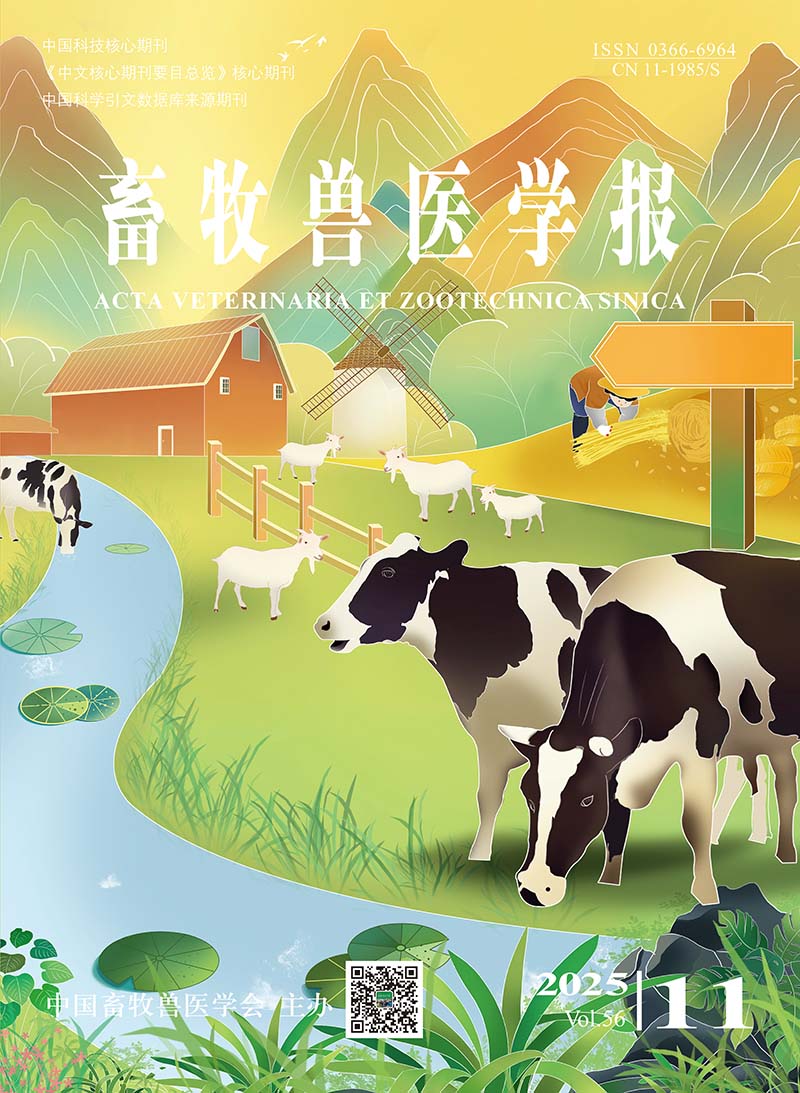To study the effect of nano-ceria on production performance, nutrient digestibility, digestive enzyme activities and digestive enzyme gene expression of laying hens, the experiment was designed to preliminarily discuss the mechanism of improving production performance and nutrient digestibility of the optimum addition of nano-ceria. 396 26-week-old healthy commercial laying hens were selected and allotted randomly to four treatments, each treatment was represented by eight replicates of twelve each, and were fed the corn-soybean basal diet with 0, 30, 60, 90 mg·kg-1 nano-ceria, respectively. The test lasted for seven weeks. The result showed that:(1)The nano-ceria had no significant effect on laying rate and feed egg ratio (P>0.05), but had significant effect on average egg weight, feed intake and broken rate of eggs(P<0.05). 30 mg·kg-1 group had higher egg weight than other groups, 60 mg·kg-1 group had lower broken rate of eggs than other groups. The nano-ceria had significant effect on calcium utilization ratio(P<0.05), but had no significant effect on the utilization rate of fat, crude protein, energy and phosphorus (P>0.05). (2)The nano-ceria had no significant effect on pancreatic lipase activities in intestinal(P>0.05), but had significant effect on pancreatic lipase activity in pancreas, the highest in 60 mg·kg-1 group. The nano-ceria had significant effect on trysin and pancreatic amylase activity in intestinal and pancreas, the highest in 30 mg·kg-1 group. (3)The nano-ceria supplementation had effect on mRNA level of digestive enzyme gene. Compared with the control group, 30 mg·kg-1 group up-regulated mRNA level of trypsinⅡ gene (P<0.01), pancreatic amylase gene and trypsinⅠgene (P<0.05), but the change of mRNA level of pancreatic lipase was not significant(P>0.05). Compared with the control group, 60 mg·kg-1 group up-regulated mRNA level of pancreatic lipase,but down-regulated mRNA level of trypsinⅡgene (P<0.01) and pancreatic amylase gene (P<0.05). Compared with the control group, 90 mg·kg-1 group down-regulated mRNA level of trypsinⅡgene (P<0.01) and pancreatic amylase gene (P<0.05), but had no influence on mRNA level of pancreatic lipase gene (P>0.05). The result indicated that nano-ceria could improve production performance by improving digestive enzyme activities and nutrients apparent digestibility caused by activation of digestive enzyme system. Compared with the control group, 30 mg·kg-1 group up-regulated mRNA level of trypsinⅡ gene, pancreatic amylase gene and trypsinⅠgene (P<0.05),and then improved the egg weight and calcium digestibility; Compared with the control group, 60 mg·kg-1 group up-regulated mRNA level of pancreatic lipase, down-regulated mRNA level of trypsinⅡgene and pancreatic amylase gene (P<0.05), the pancreatic amylase, trypsin activity and broken egg rate decreased; Compared with the control group, 90 mg·kg-1 group down-regulated mRNA level of trypsinⅡgene and pancreatic amylase gene (P<0.05), so egg weight, feed intake and trypsin activity decreased, broken egg rate increased significantly. Comprehensive assessment, the diet with addition of 30 mg·kg-1 nano-ceria was better.






